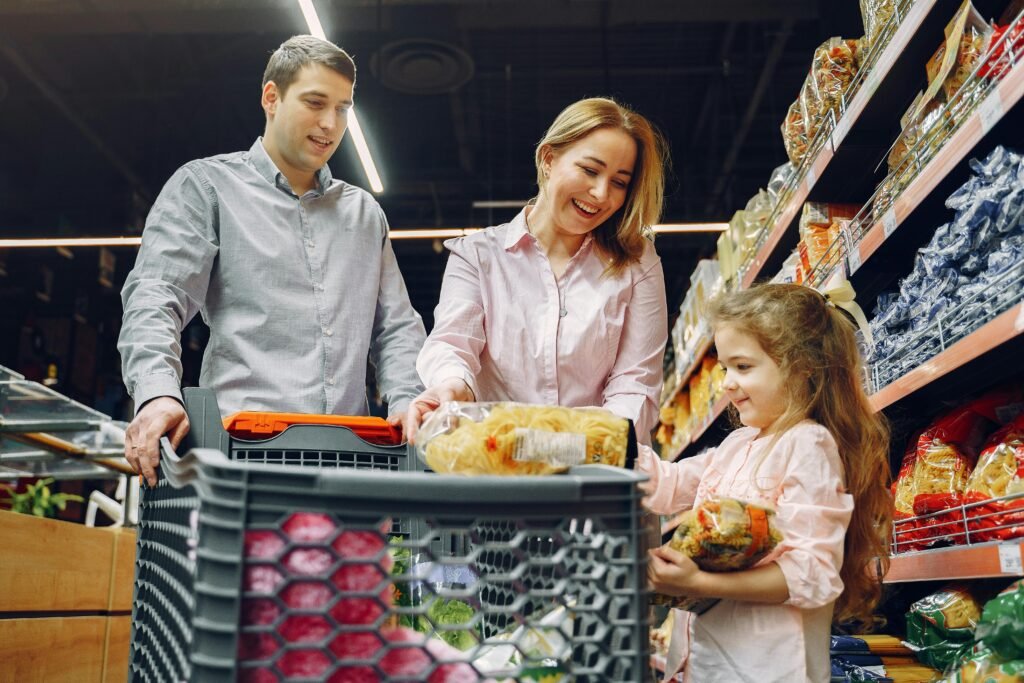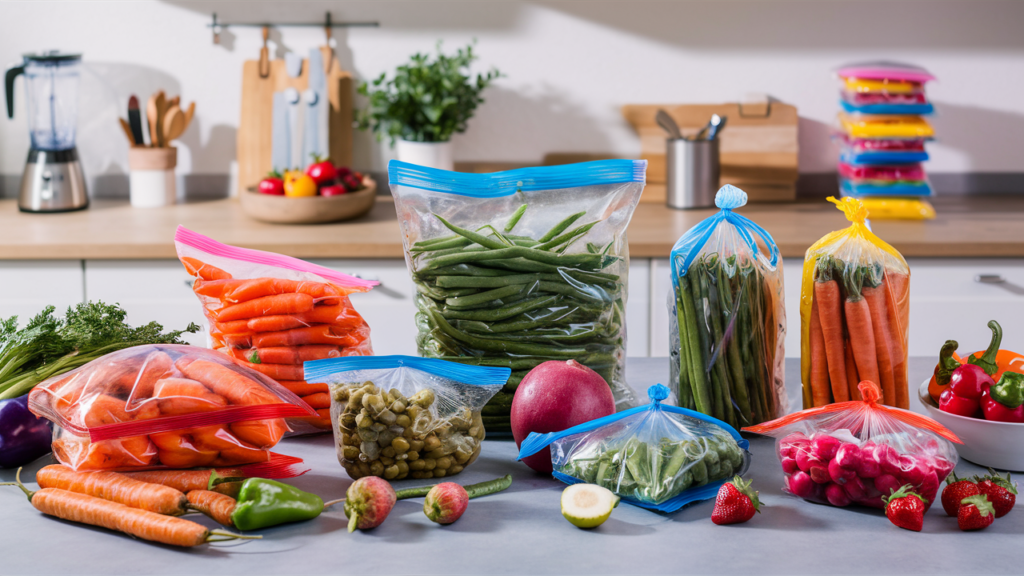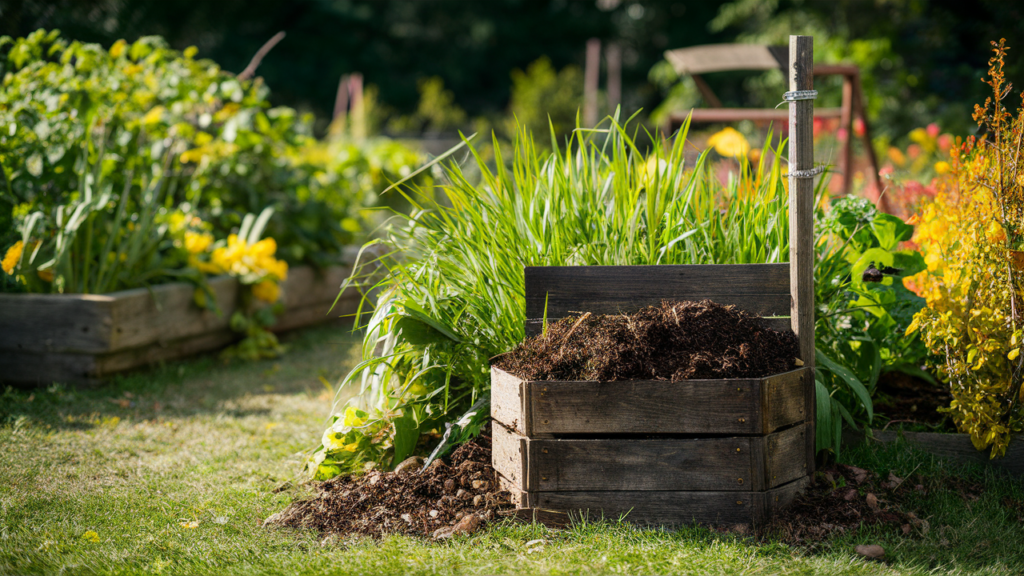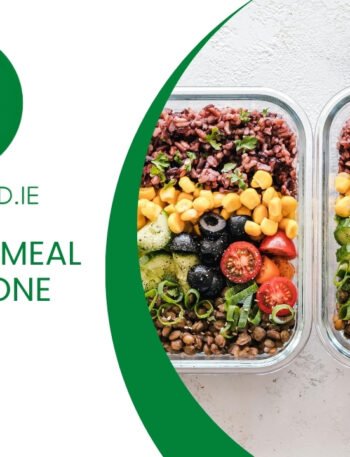Cooking for one can be a delightful experience, but it often comes with the challenge of minimizing food waste. I’m Fiona O’Sullivan, your guide from Great Food Ireland, here to share practical tips on how to reduce food waste when cooking for one.
In Ireland and the UK, food waste has far-reaching economic and environmental impacts. By planning meals, shopping smart, and storing food correctly, we can make a difference. Let’s take a journey together to embrace creative cooking, make the most of our ingredients, and even compost our scraps, all while celebrating the rich culinary heritage of our beautiful country. Have you ever found yourself tossing out perfectly good food and wondering how you can reduce waste when cooking for just yourself? As someone who’s deeply passionate about traditional Irish cuisine and the rich culinary heritage of Ireland, I’ve faced similar struggles. It’s a common issue for many, leading to both economic and environmental consequences. Today, let’s explore some practical and creative ways to reduce food waste when cooking for one.
Introduction on How to Reduce Food Waste When Cooking for One
Reducing food waste when cooking for one can be a rewarding experience. Many singles in Ireland and the UK are all too familiar with the guilt of throwing away perfectly edible food. This isn’t just a personal issue; it has significant economic and environmental impacts. Proper planning and smart shopping can reduce waste, save money, and promote healthier eating. The key is to adopt strategies that help you make the most of your groceries while minimizing waste.
Did you know that households in Ireland and the UK discard significant amounts of food every year? This not only affects our wallets but also has a profound environmental impact. Reducing food waste is crucial for saving money and conserving the environment, given the resources required to produce, transport, and store food. Let’s dive into some tips to help you master the art of cooking for one with minimal waste.
Interesting Fact
Food waste is a global issue with far-reaching consequences. According to the Food and Agriculture Organization of the United Nations (FAO), approximately one-third of all food produced globally is lost or wasted every year. That’s around 1.3 billion tonnes of food! Imagine the resources that go into producing food—from water and energy to labor and packaging—being wasted. Addressing this issue is essential for a sustainable future.
Reducing Food Waste When Cooking for One
Smart Shopping Strategies

Smart shopping is the first step in reducing food waste when cooking for one. Here are some strategies to keep in mind:
Assess Your Pantry and Fridge
Before heading to the grocery store, take stock of what you already have. Checking your pantry and fridge helps you avoid buying duplicates and ensures that you’re using up what’s on hand. This small step can prevent unnecessary purchases and reduce the chances of food expiring before you get to use it.
Plan Your Meals
Meal prepping for one for the week is a game-changer. Create a detailed shopping list based on your meal plan to avoid impulse buying. This approach ensures you have just enough ingredients for the meals you intend to prepare, reducing the likelihood of food going to waste.
Buy Smaller Quantities
When cooking for one, it makes sense to buy smaller quantities of perishables. Opt for versatile ingredients that can be used in multiple dishes. For instance, buying a smaller amount of chicken that can be used in a pasta dish, salad, and soup ensures nothing goes to waste.
Utilize Coupons and Compare Prices
Keep an eye out for coupons and special offers. Comparing unit prices also helps you make cost-effective choices. While larger packages may seem economical, they can lead to waste if you can’t consume them before they spoil.
Shop at Discount Grocers and Farmers’ Markets
Discount grocers and farmers’ markets can offer fresh produce at lower prices. The produce might be slightly irregular in shape but is just as nutritious and tasty. Plus, buying locally supports regional farmers and reduces the carbon footprint of your food.
Reinvent Your Leftovers

Creative cooking and smart use of leftovers are essential strategies for reducing food waste when cooking for one. Here are some innovative ideas and practical tips for making the most of your ingredients:
Label Leftovers
Labeling leftovers with dates ensures you know exactly when they were stored. This simple act helps you manage your food inventory better and reduces the chances of accidentally eating spoiled food.
To minimize leftovers and control portions:
- Create leftovers purposefully by preparing extra vegetables or rice for use in future meals.
- Use glass storage containers to keep track of leftovers easily.
- Dedicate one night a week to “eating down the fridge”.
- Turn dinner leftovers into lunch for the next day.
- Think of leftovers as ingredients for new dishes rather than as complete meals.
Recipes perfect for single servings or easy to scale down:
- Frittatas: Use leftover pasta or cooked vegetables.
- Soup: Blend leftover roasted or steamed vegetables with broth.
- “Kitchen sink” salads: Combine leftover vegetables, meats, and cheeses with fresh greens.
- Burritos: Use leftover rice, meat, and vegetables.
- Stale bread revival: Drizzle with olive oil, rub with tomato, and bake.
By adopting these creative cooking strategies, you can significantly reduce food waste, save money, and enjoy varied, delicious meals even when cooking for one. Remember to store leftovers properly and label them with dates to ensure food safety and minimize waste.
Maximize Food Shelf Life

Storing food properly is essential to extending its shelf life and reducing waste. Here are some tips:
Store Fruits and Vegetables Separately
Certain fruits release ethylene gas, which can cause vegetables to spoil faster. To avoid this, store them separately. For example, keep apples, bananas, and tomatoes away from leafy greens and other vegetables.
Use Airtight Containers
Airtight containers are your best friend when it comes to storing leftovers and dry goods. They prevent moisture and air from spoiling your food, keeping it fresher for longer.
Organize Your Fridge
Organizing your fridge can make a big difference. Place newer items at the back and older items at the front. This way, you’re more likely to use the older items before they expire.
Creative Cooking
Creativity in the kitchen can turn potential waste into delightful meals. Here’s how:
Use Leftovers in New Meals
Repurposing leftovers can lead to exciting and delicious new dishes. For example, leftover bread can be transformed into bread pudding, and overripe fruits can be blended into smoothies or made into jams. This not only cuts down on waste but also fuels creativity in your cooking.
Portion Control
Cooking in smaller portions can minimize leftovers. If you do end up with extra food, make it a point to use these leftovers for future meals. Dishes such as frittatas, soups, salads, and burritos are perfect for utilizing remnants from previous meals.
Single-Serving Recipes
Adapting recipes to single servings can prevent excess food from going to waste. Many traditional Irish dishes can be scaled down to suit one person. Experiment and find your favorite single-serving meals to keep things interesting.
Freezing and Preserving

Freezing and preserving food are effective ways to extend its shelf life:
Best Practices for Freezing
Cool food before freezing to prevent ice crystals from forming, which can affect texture and taste. Use airtight packaging, and label each package with its contents and the date it was frozen.
Portioning Food
Before freezing, portion food into individual servings. This makes it easier to thaw just the amount you need, reducing waste and saving time.
Methods for Preserving
Preserving food through pickling, fermenting, making jams, or dehydrating can be incredibly rewarding. These methods not only extend the life of your food but also add exciting flavors to your meals.
Compost Basics for Beginners

Starting a compost bin is a great way to reduce food waste and enrich your garden soil:
Setting Up a Compost Bin
Begin with a mix of green (nitrogen-rich) and brown (carbon-rich) materials. Green materials can include fruit and vegetable scraps, coffee grounds, and grass clippings. Brown materials can include leaves, cardboard, and paper.
Benefits of Composting
Composting reduces waste sent to landfills, provides nutrient-rich soil for gardening, and improves soil structure. It’s a simple yet impactful way to contribute to environmental sustainability.
Using Compost in Gardening
Once your compost is ready, use it to enhance your garden soil. It promotes healthy plant growth and can be particularly beneficial for growing your own herbs and vegetables.
Embrace Waste-Free Cooking
Reducing food waste is not only about saving money but also about making a positive impact on the environment. Every small step counts towards the larger goal of halving food waste by 2030, as outlined by the United Nations. By embracing waste-free cooking, you contribute to a sustainable future.
Common Questions Answered for Reducing Food Waste When Cooking for One
How Can I Avoid Overbuying?
Plan your meals, make detailed shopping lists, and stick to them. Assess your pantry and fridge before shopping to avoid buying what you already have. Buying smaller quantities and opting for versatile ingredients can also help.
What’s the Best Way to Store Leftovers?
Use airtight containers and label them with dates. Organize your fridge so older items are at the front, and make it a habit to use these items first.
How Can I Use Up Vegetables Before They Spoil?
Get creative with your cooking. Make soups, stir-fries, or frittatas using leftover vegetables. You can also blend overripe vegetables into sauces or smoothies.
How Do I Determine Food Safety?
A general rule is to follow the “use by” and “best before” dates. However, trust your senses: if the food looks, smells, and tastes fine, it’s likely safe to eat. When in doubt, it’s better to be cautious and avoid consuming food that seems off.
Are There Apps to Help Manage Excess Food?
Yes, apps like OLIO and Too Good To Go can help you share and manage excess food. They connect you with others nearby who might benefit from the food you don’t need, reducing waste and building community connections.
Conclusion
Reducing food waste when cooking for one is a journey that requires mindfulness, creativity, and a willingness to adapt. By planning your meals, shopping smartly, storing food properly, and getting creative with leftovers, you can significantly cut down on waste. Embrace these strategies, and you’ll find that not only does your wallet thank you, but so does the environment. I encourage you to share your own tips and experiences in the comments—let’s make waste-free cooking a community effort!
Irish-UK Resource Links
Here are some additional resources for Irish and UK readers to help reduce food waste when cooking for one:
- Love Food Hate Waste: Tips, recipes, and tools for reducing food waste
- Stop Food Waste: Meal planning, storage, and composting advice
- Too Good To Go: App for purchasing surplus food at discounted prices
- OLIO: Food sharing app for neighbors
- FoodCloud: Connecting businesses with surplus food to charities
- Hubbub: Creative campaigns for sustainable living
- Tesco Food Waste Hotline: Expert advice on reducing food waste
- Waste Not Want Not: Tips and recipes for using leftovers
These resources offer practical guidance, tools, and community-based solutions to help individuals in Ireland and the UK minimize food waste when cooking for one. By utilizing these platforms, readers can access local support and information tailored to their specific needs and regional context.
Yum





